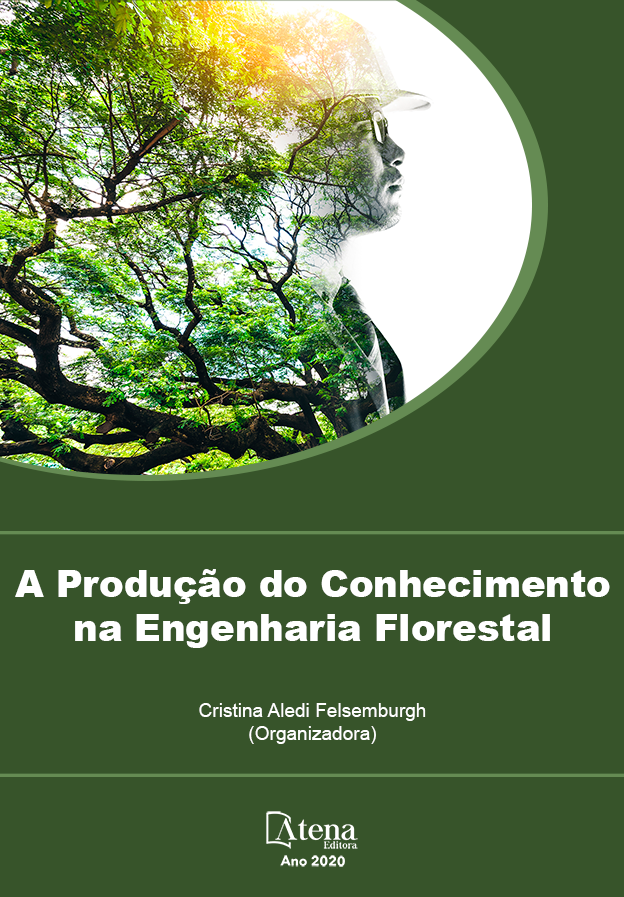
Avaliação da estimativa volumétrica para Manilkara huberi (Ducke) Chevalier na Floresta Nacional do Tapajós
O objetivo deste capítulo foi avaliar o ajuste de modelos volumétricos com base em dados de romaneio para a espécie Manilkara huberi (Ducke) Chevalier na Floresta Nacional do Tapajós. Os dados são provenientes de inventário 100% e romaneio das espécies na Unidade de Produção Anual 11, que foi manejada no ano de 2016. Foram selecionadas 1.872 árvores com DAP ≥ 50 cm e ajustados oito modelos volumétricos para a espécie. Como critérios de seleção da melhor equação avaliou-se o coeficiente de determinação ajustado, erro padrão da estimativa, significâncias dos parâmetros pelo teste t a 95% de probabilidade, critério de informação de Akaike, critério de informação Bayesiano, valor de F da análise de variância, distribuição gráfica e histogramas de resíduos. Para a validação da melhor equação, foram comparados os volumes estimados e os reais, pelo teste de Qui quadrado a 95% de probabilidade. O modelo de Schumacher Hall apresentou os melhores resultados para os parâmetros de precisão avaliado, com VIF inferior a 10, R²aj de 84,32%, Sy.x% de 18,69%, AIC e BIC de 5.468,70 e 5,490,84 respectivamente. Ao avaliar os histogramas de resíduos, foi verificado uma leve tendência de superestimar o volume da espécie. A equação obtida a partir modelos de Schumacher Hall foi a que melhor se ajustou ao conjunto de dados, não havendo diferença significativa entre o volume real e o volume estimado para a espécie Manilkara huberi com p (valor) de 0,2394. A equação proveniente do modelo de Schumacher Hall foi selecionada para estimar a volumetria da espécie na área de estudo.
Avaliação da estimativa volumétrica para Manilkara huberi (Ducke) Chevalier na Floresta Nacional do Tapajós
-
DOI: 10.22533/at.ed.00620261011
-
Palavras-chave: Dendrometria; Manejo Florestal; Volumetria.
-
Keywords: Dendrometry; Forest management; Volumetry
-
Abstract:
The purpose of this chapter was to evaluate the fit of volumetric models based on packing data for the species Manilkara huberi (Ducke) Chevalier in the Tapajos National Forest. The data come from a 100% inventory and list of species at the Annual Production Unit 11, which was managed in 2016. 1,872 trees with DBH ≥ 50 cm were selected and eight volumetric models for the species were adjusted. As criterion for selecting the best equation, the adjusted determination coefficient, standard error of the estimate, significance of the parameters by the t test at 95% probability, Akaike information criterion, Bayesian information criterion, F value of the analysis of variance were evaluated, graphical distribution and waste histograms. In order to validate the best equation, estimated and actual volumes were compared using the Chi-square test at 95% probability. The Schumacher Hall model presented the best results for the evaluated precision parameters, with VIF less than 10, R²aj of 84.32%, Sy.x% of 18.69%, AIC and BIC of 5.468,70 and 5.490,84 respectively. When evaluating the residue histograms, there was a slight tendency to overestimate the volume of the species. The equation obtained from Schumacher Hall models was the one that best fitted the data set, with no significant difference between the actual volume and the estimated volume for the species Manilkara huberi with p (value) of 0.2394. The equation from the Schumacher Hall model was selected to estimate the volumetry of the species in the study area.
-
Número de páginas: 14
- Bruno Rafael Silva de Almeida
- Bruno de Almeida LIma
- Lucas Cunha Ximenes
- Talita Godinho Bezerra
- João Ricardo Vasconcellos Gama
- Girlene da Silva Cruz


